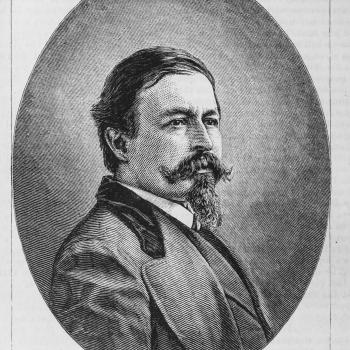
Thomas Nast was born on September 27, 1840. He was a 19th- century caricaturist and editorial cartoonist and is considered to be the father of American political cartooning. During the Civil War and Reconstruction era, Nast was well known for his cartoons supporting American Indians, Chinese Americans, and the abolition of slavery. Some of the images and icons he created or popularized include the Republican Party elephant, the Democratic Party donkey, and Uncle Sam.
Political cartoons, because of their powerful means of communicating the artists' message, are subject to "freedom of speech" protections. Have students create their own political cartoons after studying First Amendment rights and freedom of speech issues.
- First, explore free speech issues and the First Amendment using resources on this EDSITEment Freedom of Speech Week webpage. Ask students the following: "What constitutes free speech? When does one's freedom of speech become an infringement on another person's rights? How do political cartoonists exercise their first amendment rights?"
- Then, after completing one or more of the lessons below, ask students to comb the newspaper or Internet resources and create a list of current events.
- From this list, have students draw original cartoons using the techniques they've studied.
After students have completed their work, consider having them published in the school newspaper, or share them in the school library.
This extensive resource on Nast, offered by The Ohio State University, includes a biography, timeline, portfolio of Nast's cartoons, bibliography of works by and about Nast, and a teacher's guide. Also included is an essay titled "The World of Thomas Nast."
EDSITEment offers this collection of lesson plans and other resources on free speech and the First Amendment.
The Library of Congress offers this resource about political cartoons for teachers, including collections of historical political cartoons on American and British topics.
This ReadWriteThink resource links to information about First Amendment issues.
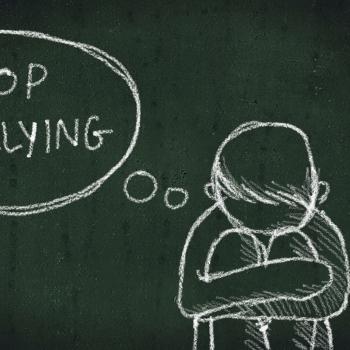
National Bullying Prevention Month was created by PACER in 2006 with a one-week event which has now evolved into a month-long effort that encourages everyone to take an active role in the bullying prevention movement. Efforts are focused on encouraging both personal and community responsibility to prevent bullying. During this month, communities are urged to address the problem of bullying through media campaigns, classroom activities, workshops, and other special events.
Promote school-wide awareness of bullying issues by sponsoring a poster contest. First, complete one of the lessons below and review information learned about bullying and the roles of bystanders and victims. Divide the class into three groups, and have each group create a poster representing the role of the bully, the victim, or bystanders to educate other classes about bullying issues. Then, advertise a poster-making contest to other classes, asking students to create posters that illustrate ways each student in the school can help stop bullying and make the school environment safer.
- Invite entrants to use any medium they wish to create their posters, including pencil, crayon, paint, or even an interactive medium such as the ReadWriteThink Printing Press (flyer format).
- Ask other classroom teachers, the school counselor, and the art teacher to help in judging the posters. Be sure to communicate your judging criteria as part of the contest.
Include a reproduction of the winning poster in the school newsletter or website, or feature the poster in the library, cafeteria, or main office.
McGruff.org provides resources for adults and children looking to stop bullying and educate others about bullying issues. Look for comics, a kids' poll, parent articles, and more.
This resource, from the U.S. Health Resources and Services Administration, offers fun games, webisodes, and other resources designed to teach children about bullying prevention.
This site provides information about bullying and offers tips for preventing bullying and providing help both to victims and to students who engage in bullying behavior.
The Meet Kelly Bear website provides this teacher's guide with strategies for teaching about bullying.
The goals of this site/center are to engage and educate communities nationwide to address bullying through creative, relevant and interactive resources.
In support of Bullying Prevention Awareness Month, the National Child Traumatic Stress Network (NCTSN) is providing resources for families, teens, educators, clinicians, mental health professionals, and law enforcement personnel on how to recognize, deal with, and prevent bullying.
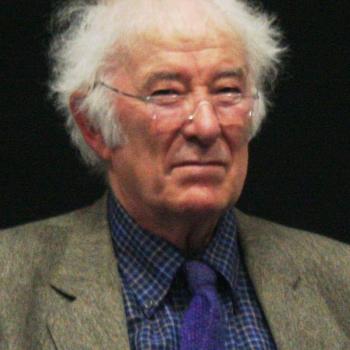
Seamus Heaney was born in Ireland on April 14, 1939. He published his first volume of poetry in 1965 and has gone on to publish nearly a dozen collections as well as a critically acclaimed translation of the epic Beowulf. Heaney has also written important prose about writing poetry, including The Government of the Tongue and The Redress of Poetry. An active promoter of the art of writing poetry, Heaney won the Nobel Prize in Literature in 1995. He died in 2013.
Share with students one of Seamus Heaney's most famous poems, "Digging." Ask students to focus on the figurative language the speaker uses to characterize himself as a writer, especially as he compares himself to his father and grandfather. Challenge students to discern the speaker's attitude toward himself as a writer, and how metaphor, simile, and image contribute to their understanding and appreciation of the poem.
Using Heaney's poem as an inspiration, invite students to write a poem that uses an extended metaphor (or a series of metaphors or other comparisons) to express their own attitudes toward themselves as writers. Point out that the speaker of "Digging" expresses his attitudes by comparing his pen positively to a gun, and then later, his pen both positively and negatively to a shovel or spade. Encourage students to use, as Heaney does, specific, vivid images to support the comparison they make.
The Internet Poetry Archive offers a collection of Heaney's poetry, along with a biography, bibliography, and more.
The Nobel Foundation provides biographical information, Heaney's 1995 acceptance speech, and related resources.
The BBC offers this interview with Heaney, in which he discusses his writing. For a lengthier lecture and a reading by Heaney, visit MITWorld's A Reading by Seamus Heaney, a video recording of a lecture given by Heaney at MIT.
This online guide provides an overview of the poem, details on its language and poetics, and an exploration of the translations of the work. Both the original version and a modern translation of the poem are available online in an interactive format.

Holocaust survivor Elie Wiesel was the author of over 40 books, the most famous of which, Night, is an autobiographical work based on his experiences during the Holocaust. Sequels to Night include Dawn and Day. Also recognized for his humanitarian and political activism, Wiesel was awarded the Nobel Peace Prize in 1986. He lived in the United States, where he taught at Boston University and served as the chairman of the Elie Wiesel Foundation for Humanity. Elie Wiesel died on July 2, 2016 in Manhattan.
Have students compare and contrast two views of the Holocaust from different authors. Have students first read both Night and Anne Frank: The Diary of a Young Girl. Then, have them look at the similarities and differences between these two accounts of Holocaust events. Ask students the following questions, using a Venn diagram to record responses during your discussion. If you prefer, students can work in small groups to create their own Venn diagrams using the ReadWriteThink Interactive.
- How are the two authors similar and different?
- How did their experiences during the Second World War differ? How were their situations similar?
- Did Anne Frank and Wiesel's main character share similar feelings?
- How did the formats of these two texts differ?
- What were the differences between the endings? Were there any similarities?
Extend students' study of the Holocaust by having them research stories of other survivors who may or may not have published books. Have students create a presentation highlighting the person they select.
Random House provides this interview with Wiesel. He discusses Night, his work as a writer, war criminals, religion, and more.
This biography is featured on the official website of the Nobel Foundation. The page also offers additional resources related to Wiesel, winner of the 1986 Nobel Peace Prize.
This resource from PBS provides a biography of Wiesel, a bibliography of his work, and a teacher's guide.
This United States Holocaust Memorial Museum page features personal accounts of people who experienced the Holocaust firsthand.

Statesman Benjamin Franklin was born on January 17, 1706, and is well known as one of the leading founders and important early political figures of the United States. Franklin is also known for his writings and achievements in a wide variety of areas-including his famous experiments with electricity. Among his many accomplishments, from 1775 to 1776, Franklin served as Postmaster General under the Continental Congress.
Note Franklin's service as Postmaster General by setting up your own classroom postal service. First, have students investigate the roles and duties of the USPS Postmaster General and Franklin's role in particular. Discuss Franklin's contributions to postal history, then have students set up their own mail delivery service.
- First, have the class nominate (by show of hands or ballot) and select a Postmaster General, who will organize your postal service.
- Set up mailboxes, such as mail pouches attached to student desks, shoeboxes with slotted lids, shelves, decorated coffee cans, etc. Then choose a frequency of delivery-daily? Morning and afternoon?
- Finally, have the Postmaster General organize a group of "mail carriers" to collect and deliver mail from and to mailboxes. You may wish to have all students take turns along with other classroom jobs, or accept volunteers who can be scheduled for mail duty on a rotating basis.
- Students can use the interactive Letter Generator to write letters to their classmates. Be sure students understand that their letters should be appropriate for the classroom, and that everyone should be included. More tips are available for use with the Letter Generator.
This online exhibit from the Library of Congress examines Franklin through a wealth of primary sources.
PBS offers this extensive resource about Benjamin Franklin's life and work. Included are lesson plans and interactive activities.
This Smithsonian Institute website offers information on U.S. postal history and stamp collecting. Included is information on the Pony Express, Airmail, Mail Call during times of war, and details on the role of Benjamin Franklin in the establishment of the U.S. Post Office.
This child-friendly site provides readable information about Franklin's work as a printer, librarian, inventor, and statesman. A cartoon Ben then serves as host, explaining a variety of topics related to the U.S. government.

Anglo-Irish writer Jonathan Swift was born on November 30, 1667. Swift is famous for works including Gulliver's Travels, A Modest Proposal, and A Tale of a Tub. Known for his satirical writings, as well as his poetry and essays, Swift also wrote under several pseudonyms, including the name Isaac Bickerstaff.
A Modest Proposal is considered to be one of the best examples of satire ever written. Have students explore the elements of satire and parody using the lessons below. Then, have them extend that exploration by surveying instances of satire and parody in television and film, advertising, and journalism. Begin by dividing students into three groups and assigning each to either television and film, journalism, or advertising.
- Have each group explore their assigned topic, looking for examples of satire or parody. As they find examples, encourage students to locate concrete examples they can bring in for a class display. Examples might include a DVD case or movie review, a magazine advertisement, a newspaper editorial, a book or book jacket, etc.
- Working as a group, have students create an exhibit that highlights their findings. As part of the display, students should describe how each item is an example of satire or parody, what satirical technique is being used, and other related information.
This site, part of the Victorian Web, includes a biography of Swift, information about the political and social context of his time, his views on religion, and more.
Read a brief biography of Swift at the HyperHistory Online page. Also included is a link to related information.
This website offers the full text of Swift's Gulliver's Travels, available online or in PDF, Kindle, and several other formats.

Noah Webster is considered by many to be the "father of the American dictionary." He began his work on the project at the age of 43. It took him more than 25 years to complete the first edition. Today Merriam-Webster offers online, CD, and print versions of its Collegiate® Dictionary, currently in its 11th edition with more than 225,000 definitions!
Celebrate the publication of Webster's Dictionary using a variation of the board game Balderdash. Divide students into groups of five or six, and provide each group with a dictionary and some blank paper cut into strips:
- One student scans the dictionary to find a word that he or she believes no one has ever heard before, reads it aloud, and spells it. The other students write down either a real or made-up definition of the word.
- The student with the dictionary writes the real definition and then collects the other definitions. The leader reads all of the definitions and the students in the group then individually choose which of the definitions they believe is real.
- Two points are awarded for selecting the correct definition and one point to each student whose definition is selected. Points are totalled and the next person in the circle selects a new word.
This site is the online version of the Merriam-Webster Dictionary. Students can access the site to look up words and definitions. There is also a Word of the Day to help students build their vocabulary.
This ReadWriteThink interactive allows students to print an alphabet chart or pages for an alphabet book.
At this site, students can search dozens of dictionaries. The resource also provides links to French, German, Italian, and Spanish translation tools.
Word Central, published by Merriam-Webster, offers a kid-friendly student dictionary. Students can also build their own dictionary and take the Daily Buzzword vocabulary challenge.
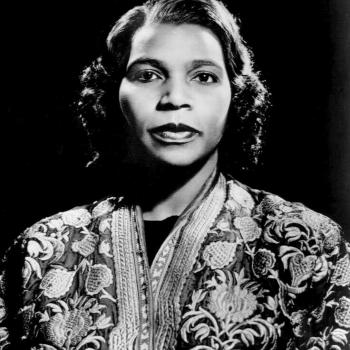
Marian Anderson planned on singing at Constitution Hall in Washington, DC, which was owned by the Daughters of the American Revolution (DAR). They refused to let her perform because she was African American. Eleanor Roosevelt, outraged by this show of prejudice, arranged for Anderson to sing at the Lincoln Memorial instead.
When Eleanor Roosevelt learned that Marian Anderson had been denied permission to sing at Constitution Hall in Washington, DC, she decided to resign her membership in the Daughters of the American Revolution (DAR). Show your students her resignation letter, along with the letter from Mrs. Henry M. Robert, Jr., president general of the DAR, responding to Roosevelt's resignation (pages one and two). Students may have difficulty reading the handwritten text so, after viewing the original documents, you may want to transcribe them.
Ask your students to write a letter to a newspaper editor explaining their feelings about a present-day social injustice. Invite your students to compose their letters with the Letter Generator.
Read the transcript of this PBS report on Anderson's life, which includes comments by Anderson, her family, and her friends and colleagues.
This resource is from the Annenberg Rare Book and Manuscript Library. The site offers video and audio excerpts of Anderson's concerts and interviews.
These pages from the Library of Congress' America's Story site provide information about Anderson for elementary students.
This DAR press release paid tributeto Marian Anderson's memory and commemorated a pivotal event in the struggle for racial equality.

Gaylord Nelson founded Earth Day in 1970. In the same year, Denis Hayes coordinated the first Earth Day in the United States. As a result of Earth Day, many environmental laws were passed and the Environmental Protection Agency was created.
In celebration of Earth Day, have your students research some environmentalists who have made major contributions to our planet. A good starting point would be to view the people listed on the Ecology Hall of Fame. Have each student choose one person.
After researching the person's achievements, students can then write letters to the environmentalists asking for their opinions on a current environmental issue or to share ideas on how to protect the earth. Students can write a friendly or business letter using the Letter Generator. After printing the letters, have students turn their letters into letter poems using the Letter Poem Creator, which will help them change their letters into poetic form.
Once the poems are finished, host an Earth Day poetry reading-outdoors if possible.
Find tips for green living.
The EEK! website is filled with environment-related information and activities for students in grades 4–8. Teachers can find lesson plans and related links.
The Earth Foundation offers this collection of resources. Of interest is the Teacher/Student resources section, which has sample lesson plans, links to information on the history of Earth Day and the rainforest, and letter-writing campaigns for students.
This site, from the United States Environmental Protection Agency, provides information about a variety of environmental topics-from air and water to garbage and recycling.
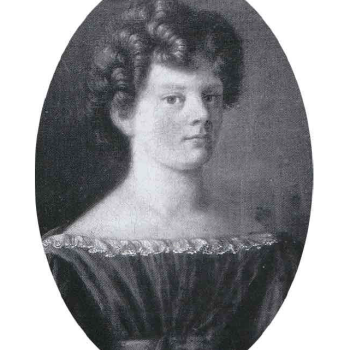
Anna Sewell's novel about a horse named Black Beauty touched a responsive chord in readers of many ages when it was first published in 1877. It remains a classic novel, one that speaks to contemporary readers as well.
In Black Beauty, Anna Sewell tackled one of the contemporary issues of her time, the cruel treatment of horses, many of them abused by their owners. Her work made readers aware of the need for laws to protect animals from harsh and abusive treatment.
After exploring the cruelty to animals in Sewell's novel, extend the discussion to current events. Divide students into pairs or small groups and ask them to conduct some research into the use of animals in testing drugs, cosmetics, and other products. Be sure to have online as well as traditional print resources available. Student groups should compile and present the information for and against using animals to test various substances.
Penguin Group publishing offers this biography of Sewell. Students can read about her childhood, her love of horses, and her gift for writing.
This site provides a biography of both Anna Sewell and her mother. They were both writers of juvenile fiction.
Project Gutenberg makes available downloadable versions of Sewell's classic text.
The ASPSCA offers this informational website for children. Students can access information about adopted pets, alternatives to dissection, animal-safe science projects, and more.